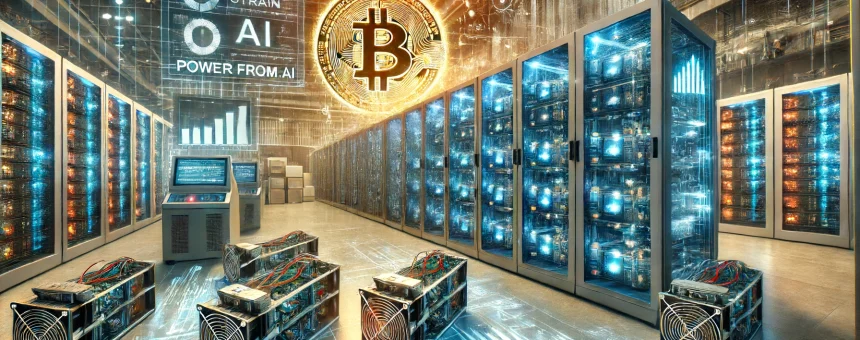Bitcoin Mining: The Unexpected Ally in Managing Power Grid Strain from AI

Bitcoin mining is emerging as a key player in stabilizing power grids, especially in areas heavily strained by AI data centers. With Microsoft’s expansion of AI data centers in Arizona and Wisconsin, power consumption is skyrocketing. By 2026, AI is projected to consume 40 GW of the 96 GW total power demand from data centers, nearly doubling from 2023’s 49 GW, according to Coindesk.
These AI centers generate excessive heat and demand significant water for cooling, with Microsoft’s Goodyear, Arizona, center alone expected to use 56 million gallons annually. This puts local communities at risk of water shortages.
Conversely, Bitcoin mining is demonstrating its potential to balance power grids by adjusting energy consumption in real-time. Grid operators, traditionally reliant on energy production adjustments, now have Bitcoin miners‘ flexible energy usage as an additional tool to maintain grid stability. This adaptability is crucial, especially with the inconsistent nature of renewable energy sources like wind and solar.
Oklahoma and Texas are notable examples. Oklahoma recently passed a bill making commercial mining equipment tax-exempt if miners provide an adjustable load to local power producers. Texas, with its substantial wind energy production, uses Bitcoin miners to consume surplus electricity during off-peak hours, preventing blackouts and stabilizing the grid during crises.
Scandinavia and Iceland also benefit from Bitcoin mining. In Scandinavia, surplus wind energy is utilized efficiently, while in Iceland, abundant geothermal and hydroelectric power supports consistent Bitcoin mining operations. This not only stabilizes the grid but also enhances the economic viability of renewable energy projects.
In summary, Bitcoin mining’s role in energy management is expanding, providing a crucial balancing mechanism for power grids strained by AI data centers and promoting the use of renewable energy. This integration paves the way for innovative solutions in global energy management.

